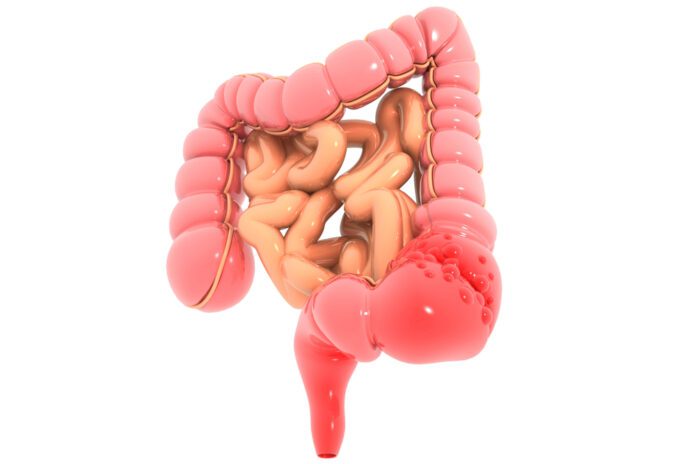Overview Of Virtual Colonoscopy
A virtual colonoscopy (VC) is when a CT scan or x-ray exam looks for polyps, cancer, or other diseases in the large intestine, or colon.
Commonly Associated With
Computed tomographic colonography; Colonography – virtual Colonoscopy – virtual; CT colonography
Performing A Virtual Colonoscopy
VC is different from a standard colonoscopy. A traditional colonoscopy involves a long, lighted tool called a colonoscope. A colonoscope is then sent from the rectum into the large intestine.
Radiology departments of a hospital or medical center generally administer VCs. VCs usually do not need sedatives or a colonoscope.
A VC exam generally goes like this:
- Lie on your left side on a narrow table, connected to an MRI or CT machine.
- Draw your knees up toward your chest while laying on the table.
- A small, flexible tube is then inserted into the rectum. The colon is then pumped with air for easer sight and examining room.
- You then lie on your back.
- The table slides into a large tunnel in the CT or MRI machine. They then take X-rays of your colon.
- When you lay on your stomach, X-rays are then also taken.
- You must not move during the exam because movement can blur an x-ray image. It is common need to hold your breath momentarily while taking an x-ray.
A computer combines the total images to form three-dimensional pictures of the colon. The doctor can then view the combination of images on a video monitor.
How To Prepare For The Virtual Colonoscopy
Your bowels need to be completely clean and emptied for an exam. This is because if the intestines are not thoroughly cleaned, a treatable problem in the large intestine can be missed, during the exam. Your health care provider will inform you on steps for cleansing your bowel.
These steps can include:
- Taking laxatives
- Using enemas
- Not eating solid foods for 1 to 3 days before the test. However, talk to your provider about proper nutritional intake while cleansing your bowls.
Drink Large amounts of clear liquids for 1 to 3 days before the test. Examples of clear liquids include:
- Water
- Sports drinks
- Strained fruit juices
- Clear coffee or tea
- Fat-free bouillon or broth
- Gelatin
- Sports drinks
- Strained fruit juices (no pulp)
Keep taking prescribed medicine unless a specific provider tells you otherwise. Ask your provider if you need to stop taking iron pills or liquids a few days before the test, unless your provider tells you it is safe to continue with that medication.
Iron can make your stool dark or black. This will then make it more difficult for the doctor to accurately view inside your bowel. CT and MRI scanners are sensitive to metals, so do not wear jewelry to your exam. You will generally need to wear a hospital gown for a VC procedure.
How The Test Should Feel
The x-rays are painless. However, pumping air into the colon may cause gas pain or cramping.
After the exam:
- You may feel bloated and have mild abdominal cramping and need to pass a larger amount of gas. This is a standard reaction..
- You will be able to return to regular activities after a day’s rest and your provider’s recommendation.
Why Virtual Colonoscopy Are Performed
A VC is possible for the following reasons:
- Anemia due to low iron
- Blood in the stool or black, tarry stools
- Follow-up on colon cancer or polyps
- Changes in bowel movements, abdominal pain, or concerning weight loss
- A colon or rectum cancer screening. A test should be routinely every 5 years.
Your doctor might wish to do a traditional colonoscopy instead of a VC. The reason is that a VC does not allow the doctor to remove tissue samples or polyps, while a colonoscopy does. Often, a VC is for if your doctor was not able to move the flexible tube entirely through the colon during a standard colonoscopy.
Normal Results
A normal findings are images of a healthy intestinal tract.
What Abnormal Results Mean
Abnormal test results may mean any of the following:
- Colorectal cancer
- Colitis, which is a swollen or inflamed intestine. These emerge from Crohn’s disease, infection, ulcerative colitis, or a lack of blood flow in the area.
- Abnormal pouches on the lining of the intestines, called diverticulosis
- Lower gastrointestinal (GI) bleeding
- Polyps
- Tumor(s)
A traditional colonoscopy can be tested on a different day after a VC, if:
- No alarm for bleeding or other symptoms were found. A VC can possibly miss less noticeable problems in the colon.
- Issues that need a biopsy were found on a VC.
Risks Of Virtual Colonoscopy
Risks of VC include:
- Nausea, vomiting, bloating, or rectal irritation from medicines used to prepare for the test
- Exposure to radiation, due to the CT scan
- Perforating intestine when the air pump tube is inserted (highly unlikely).
Considerations
Differences between virtual and conventional colonoscopy include:
- VC can view the colon from a variety of different angles. This is not as easy with a traditionally colonoscopy.
- VC does not require sedation. You can generally return to your standard activities right away after the test. Regular colonoscopies use sedation and often cause the loss of a work day.
- VC using CT scanners expose you to a notable size of radiation.
- A traditional colonoscopy has a tiny risk of bowel perforation, which creates a small tear in the bowels. However, there is almost no such risk from VC.
- VC is generally not able to detect polyps smaller than 10 mm. Yet, a regular colonoscopy can detect polyps of all sizes.



